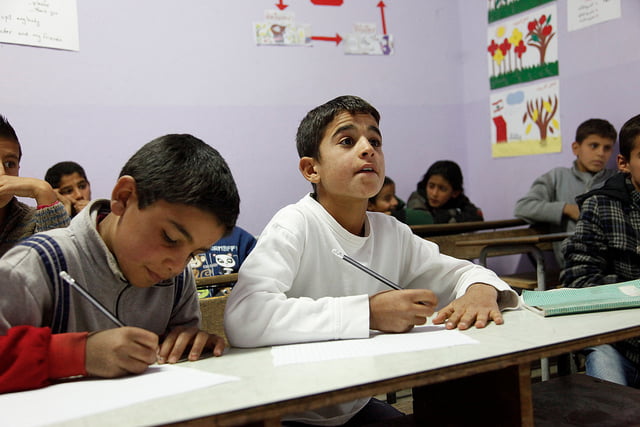It is difficult to understate the humanitarian toll the Syrian conflict has taken, not just on the 22 million Syrians that once called the country home but on the region as a whole. As the death toll from the war approaches the grim milestone of 200,000, the UN estimates another 3 million Syrians are registered as refugees, 6.5 million are displaced within Syria and nearly 11 million Syrians are in need of international assistance inside Syria while 4.6 million are located in hard to access of besieged areas.
These numbers represent millions of individuals and families desperately fighting to survive as well as a massive burden on neighboring countries as they struggle to absorb and care for new arrivals in addition to their own people. Yet despite being the largest humanitarian crisis in the world, aid funding for this disaster consistently comes up short despite demand.
There are likely numerous reasons for this including the strain the 2008 economic crisis continues to have on traditional donor states as well as the large number of other natural and conflict-related disasters in recent years that have demanded funding assistance. The normalcy of the crisis – now going on for over three years – also likely contributes to the stagnation in donations when aid organizations make their appeals. But in the US, part of the problem is also probably due to people not knowing where they should contribute or where the money will go to. Global Impact, an international spin-off of the United Way, is working to change that in multiple ways.
Rather than carry out activities on the ground, Global Impact works with the public and private sectors to build partnerships and raise money for ongoing programs. Much like the traditional United Way campaigns, the central focus of Global Impact is workplace giving campaigns although the organization is now working with corporate donors to fill gaps in pre-existing donations to make sure they are able to succeed.
This is the goal in their new Syria campaign announced at the annual meeting of the Clinton Global Initiative earlier this week. By creating and promoting a general Syrian Refugee and Resiliency Fund, Global Impact hopes to fill gaps in education and healthcare that would otherwise prevent programs from getting off the ground.
Talking to UN Dispatch this week, Global Impact CEO Scott Jackson used the example of providing education to Syrian refugees in Jordan. Companies such as Pilosio S.p.A have committed to providing school and training structures while numerous companies and organizations have committed to providing textbooks and supplies as well as funding teacher salaries. But no one has currently committed to creating a teaching curriculum, a vital part of the education process that is needed to help Syrians continue their education even while displaced. This is where the Resiliency Fund would come in: by helping fill this gap with additional funds for curriculum development it ensures that the other commitments made can succeed.
This is just one example of how even small amounts of funding can make a difference. With such a massive humanitarian disaster, gaps exist throughout the chain that prevents projects from having a greater impact on communities that desperately needs them. But by building bridges between donors, aid organizations and communities, there is room to capitalize on funds already raised as well as encourage people to give more.
